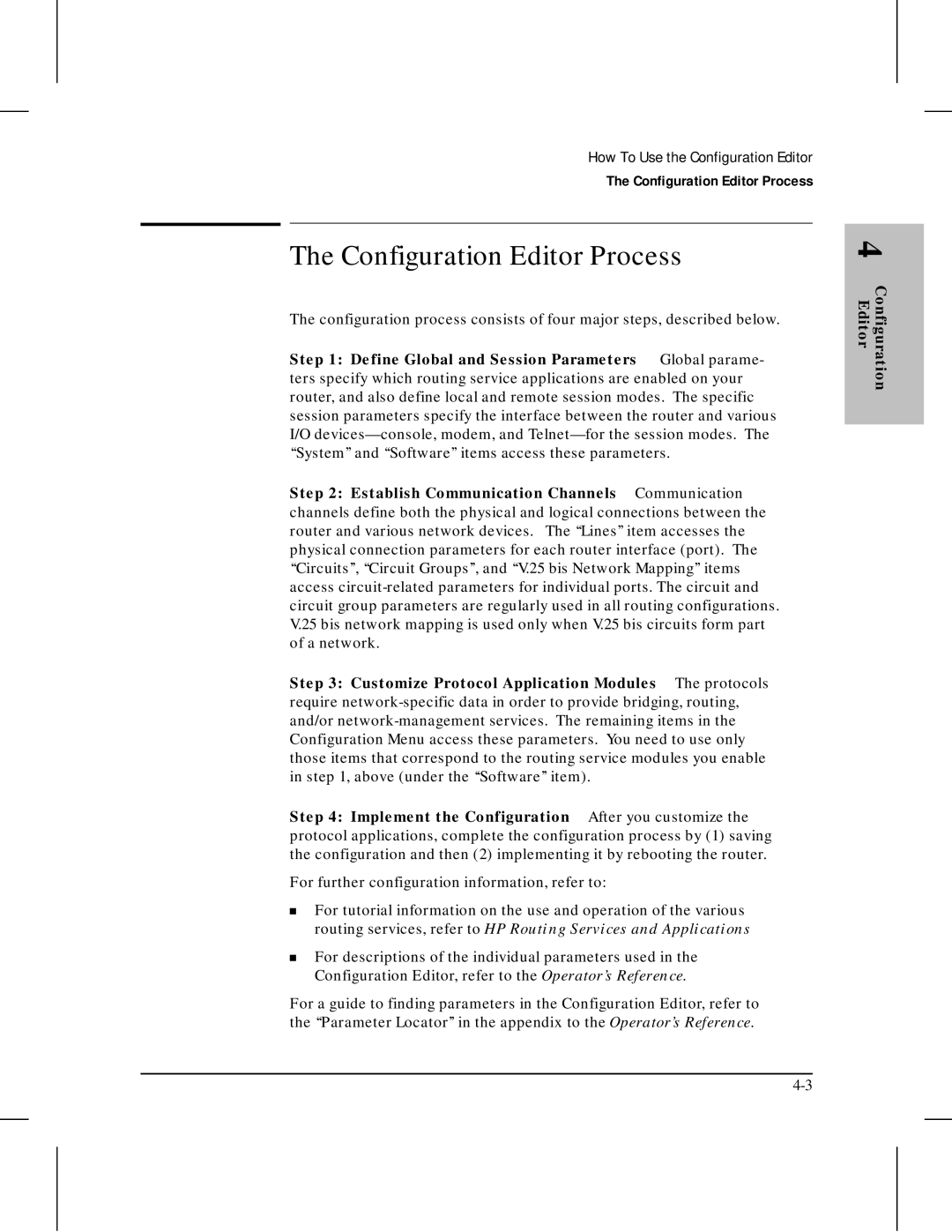
How To Use the Configuration Editor
The Configuration Editor Process
The Configuration Editor Process
The configuration process consists of four major steps, described below.
Step 1: Define Global and Session Parameters Global parame- ters specify which routing service applications are enabled on your router, and also define local and remote session modes. The specific session parameters specify the interface between the router and various I/O
Step 2: Establish Communication Channels Communication channels define both the physical and logical connections between the router and various network devices. The ‘‘Lines’’ item accesses the physical connection parameters for each router interface (port). The ‘‘Circuits’’, ‘‘Circuit Groups’’, and ‘‘V.25 bis Network Mapping’’ items access
Step 3: Customize Protocol Application Modules The protocols require
Step 4: Implement the Configuration After you customize the protocol applications, complete the configuration process by (1) saving the configuration and then (2) implementing it by rebooting the router.
For further configuration information, refer to:
For tutorial information on the use and operation of the various routing services, refer to HP Routing Services and Applications
For descriptions of the individual parameters used in the
Configuration Editor, refer to the Operator’s Reference.
For a guide to finding parameters in the Configuration Editor, refer to the ‘‘Parameter Locator’’ in the appendix to the Operator’s Reference.
4 | |
Editor | Configuration |
|
|
